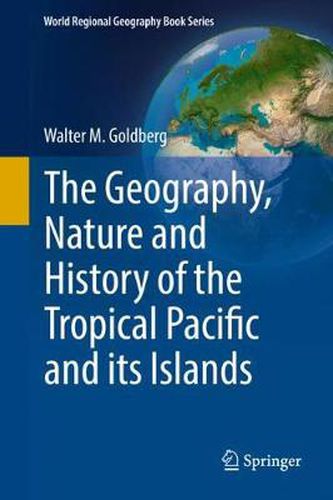Readings Newsletter
Become a Readings Member to make your shopping experience even easier.
Sign in or sign up for free!
You’re not far away from qualifying for FREE standard shipping within Australia
You’ve qualified for FREE standard shipping within Australia
The cart is loading…






This title is printed to order. This book may have been self-published. If so, we cannot guarantee the quality of the content. In the main most books will have gone through the editing process however some may not. We therefore suggest that you be aware of this before ordering this book. If in doubt check either the author or publisher’s details as we are unable to accept any returns unless they are faulty. Please contact us if you have any questions.
This volume provides an accessible scientific introduction to the historical geography of Tropical Pacific Islands, assessing the environmental and cultural changes they have undergone and how they are affected currently by these shifts and alterations. The book emphasizes the roles of plants, animals, people, and the environment in shaping the tropical Pacific through a cross-disciplinary approach involving history, geography, biology, environmental science, and anthropology. With these diverse scientific perspectives, the eight chapters of the book provide a comprehensive overview of Tropical Pacific Islands from their initial colonization by native peoples to their occupation by colonial powers, and the contemporary changes that have affected the natural history and social fabric of these islands.
The Tropical Pacific Islands are introduced by a description of their geological formation, development, and geography. From there, the book details the origins of the island’s original peoples and the dawn of the political economy of these islands, including the domestication and trade of plants, animals, and other natural resources. Next, readers will learn about the impact of missionaries on Pacific Islands, and the affects of Wold War II and nuclear testing on natural resources and the health of its people. The final chapter discusses the islands in the context of natural resource extraction, population increases, and global climate change. Working together these factors are shown to affect rainfall and limited water resources, as well as the ability to sustain traditional crops, and the capacity of the islands to accomodate its residents.
$9.00 standard shipping within Australia
FREE standard shipping within Australia for orders over $100.00
Express & International shipping calculated at checkout
This title is printed to order. This book may have been self-published. If so, we cannot guarantee the quality of the content. In the main most books will have gone through the editing process however some may not. We therefore suggest that you be aware of this before ordering this book. If in doubt check either the author or publisher’s details as we are unable to accept any returns unless they are faulty. Please contact us if you have any questions.
This volume provides an accessible scientific introduction to the historical geography of Tropical Pacific Islands, assessing the environmental and cultural changes they have undergone and how they are affected currently by these shifts and alterations. The book emphasizes the roles of plants, animals, people, and the environment in shaping the tropical Pacific through a cross-disciplinary approach involving history, geography, biology, environmental science, and anthropology. With these diverse scientific perspectives, the eight chapters of the book provide a comprehensive overview of Tropical Pacific Islands from their initial colonization by native peoples to their occupation by colonial powers, and the contemporary changes that have affected the natural history and social fabric of these islands.
The Tropical Pacific Islands are introduced by a description of their geological formation, development, and geography. From there, the book details the origins of the island’s original peoples and the dawn of the political economy of these islands, including the domestication and trade of plants, animals, and other natural resources. Next, readers will learn about the impact of missionaries on Pacific Islands, and the affects of Wold War II and nuclear testing on natural resources and the health of its people. The final chapter discusses the islands in the context of natural resource extraction, population increases, and global climate change. Working together these factors are shown to affect rainfall and limited water resources, as well as the ability to sustain traditional crops, and the capacity of the islands to accomodate its residents.